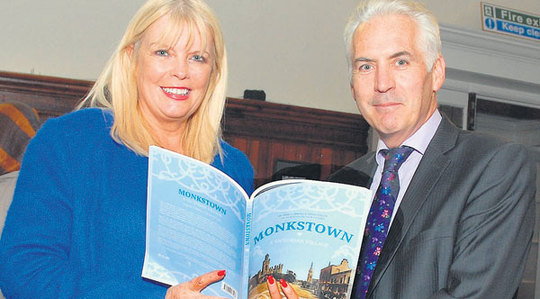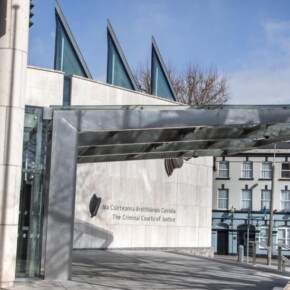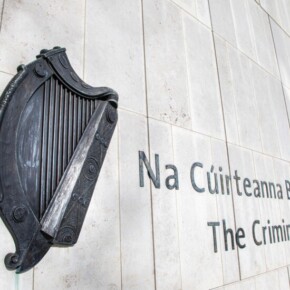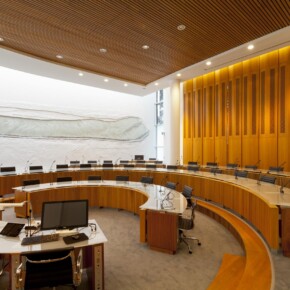New book about Monkstown recalls its Victorian age
Dublin People 22 Nov 2014
A NEW book about Monkstown was launched in the scenic Southside suburb last week.
The launch of
‘Monkstown a Victorian Village’ in the Knox Hall attracted a large crowd of local residents.
Séamus Cannon and Carole Cullen’s work is an affectionate and evocative celebration of the social and architectural heritage of Monkstown.
It was inspired by the original research by two Monkstown residents, Vincent Quilter PP and
Jim Gowan, who prepared a typescript for publication in 1990, but never proceeded with it.
A single copy of this typescript survived in the care of Carole Cullen. The current authors have taken account of more recent research to rewrite the history and have illustrated it in full colour.
The Quilter and Gowan families, Dún Laoghaire Historical Society and the Blackrock Society were engaged in the undertaking while the Dún Laoghaire Rathdown Heritage Office grant-aided the publication.
The editorial board includes well-known local historian Ã?tain Murphy, Colin Scudds (DL Borough Historical Society), Noel Tierney (Blackrock Society), and Carrie Fonseca (Blackrock Education Centre) as well as the authors, both of whom are local residents.
The designer is Elaine Pearce, who has designed many high quality publications and is also a local resident.
Today’s Monkstown is a creation of the nineteenth century, when the development of a commuter railway and the harbour at Dún Laoghaire (then Kingstown) made it an attractive residential area.
It became a suburb of substantial houses occupied by successful business people and wealthy professionals. Graceful terraces and avenues complement the large detached houses to create a pleasingly unified built environment.
The scale, intimacy and architectural detail of the village shops, clustered beside the churches, also contribute to the atmosphere of another age.
Behind this Victorian façade lies an older Monkstown, which took its name from the Cistercian monks of Monkstown Castle, which was built in the 13th century to protect the extensive monastic lands from attack by displaced native Irish.
A local tradition suggests an even older monastic settlement in the late eighth century, in the grounds of Carrickbrennan graveyard.
Monkstown residents have made major contributions to society at home and abroad.
Two major international missionary movements, The Leprosy Mission and the Medical Missionaries of Mary, that focused on health care originated in Monkstown, and distinguished humanitarians from the town campaigned vigorously for improvements in the conditions of the poor and made a great contribution to famine relief.
A fascinating group of scientists, several of them astronomers, also lived in Monkstown.
Today Monkstown has been transformed with the development of housing estates and apartment blocks, but it has retained its Victorian atmosphere in the integrity of its architecture and in the intimate scale of its shops.
It has also retained a vigorous commitment to social justice evident in initiatives like the Samaritans, the Irish branch of which originated in Monkstown and the international aid agency Goal.











